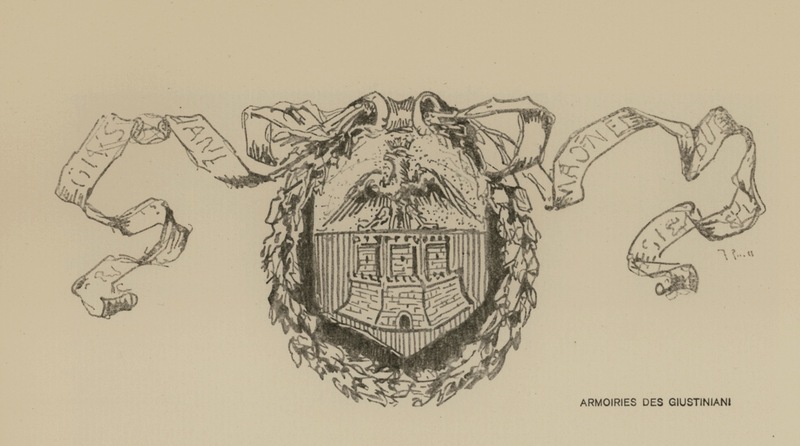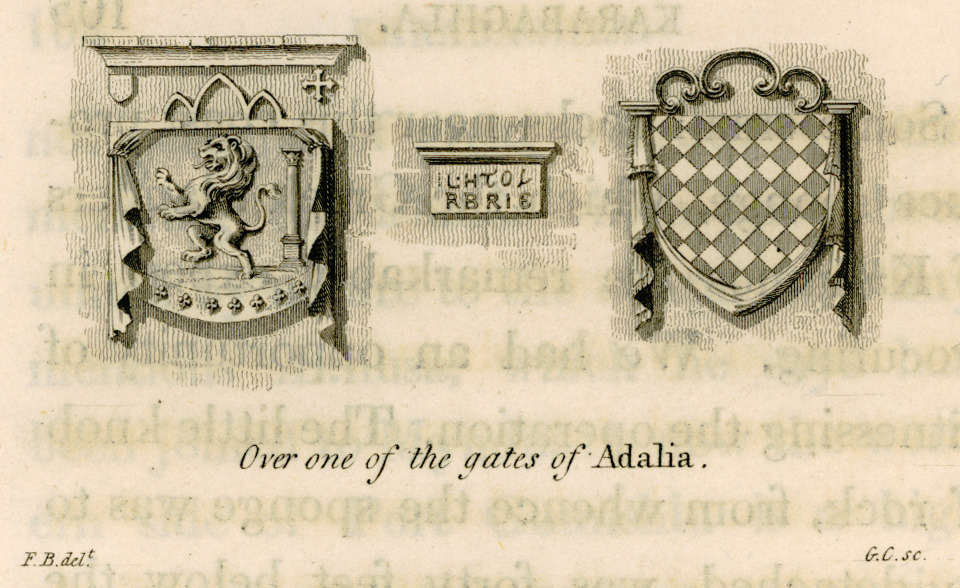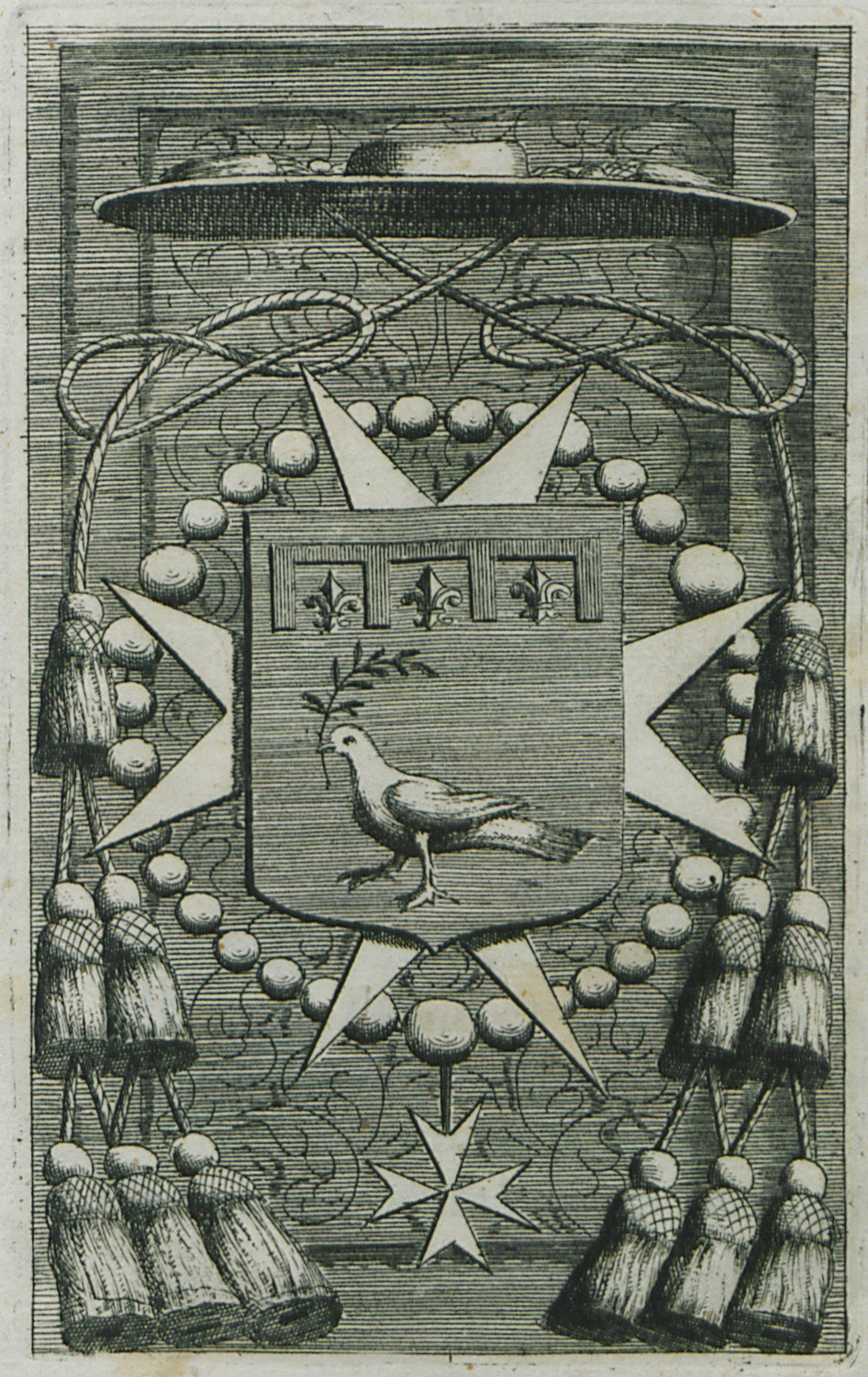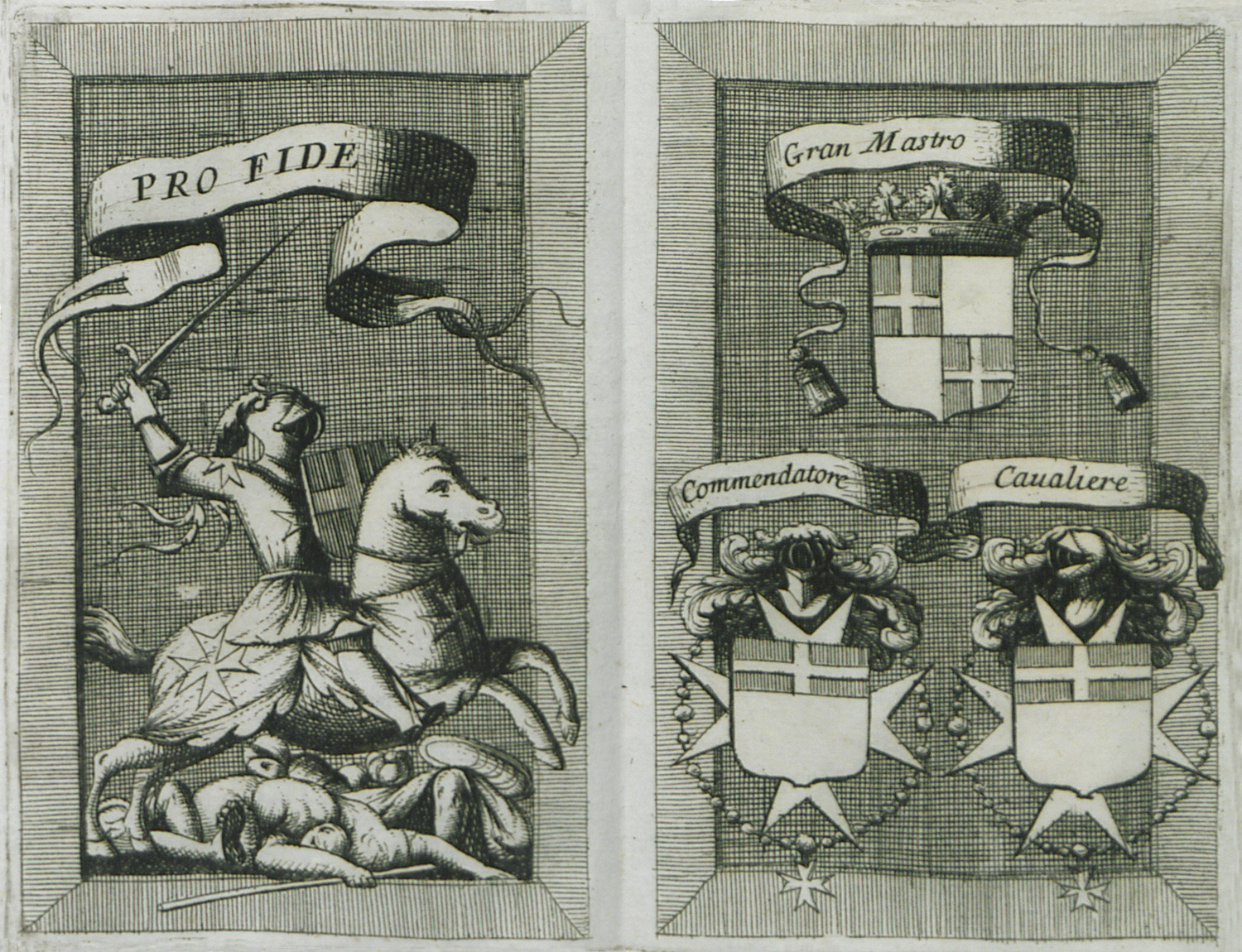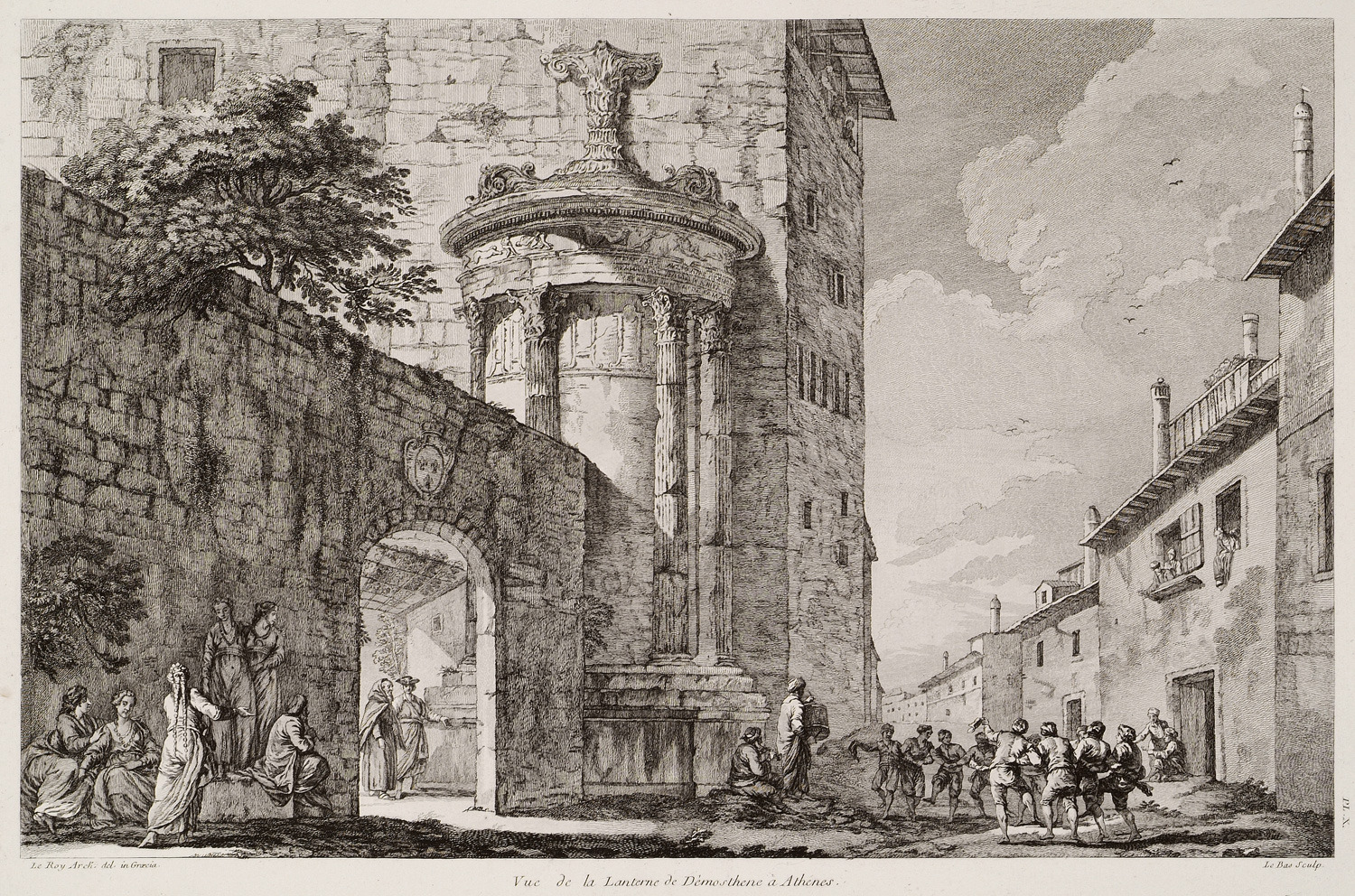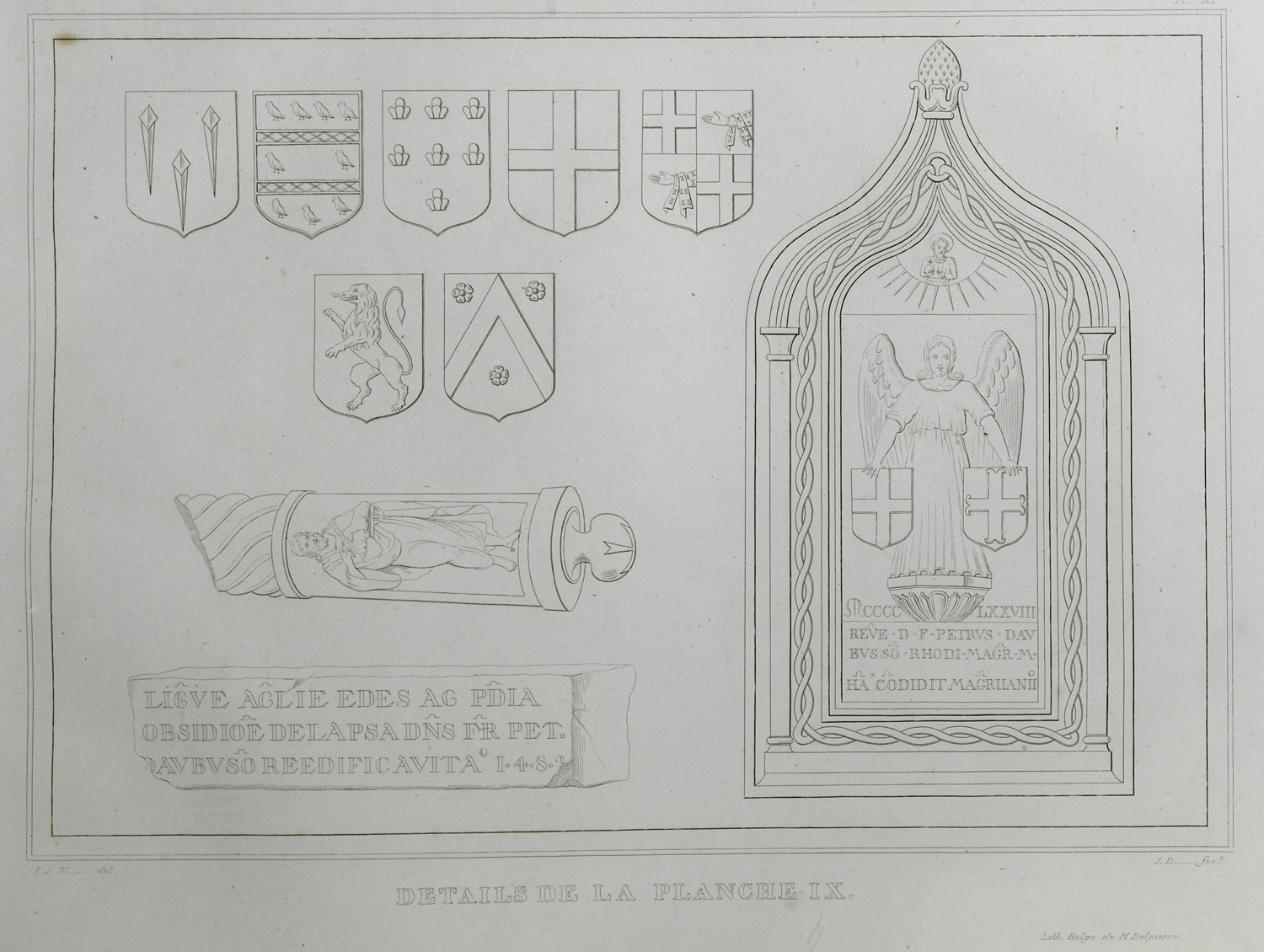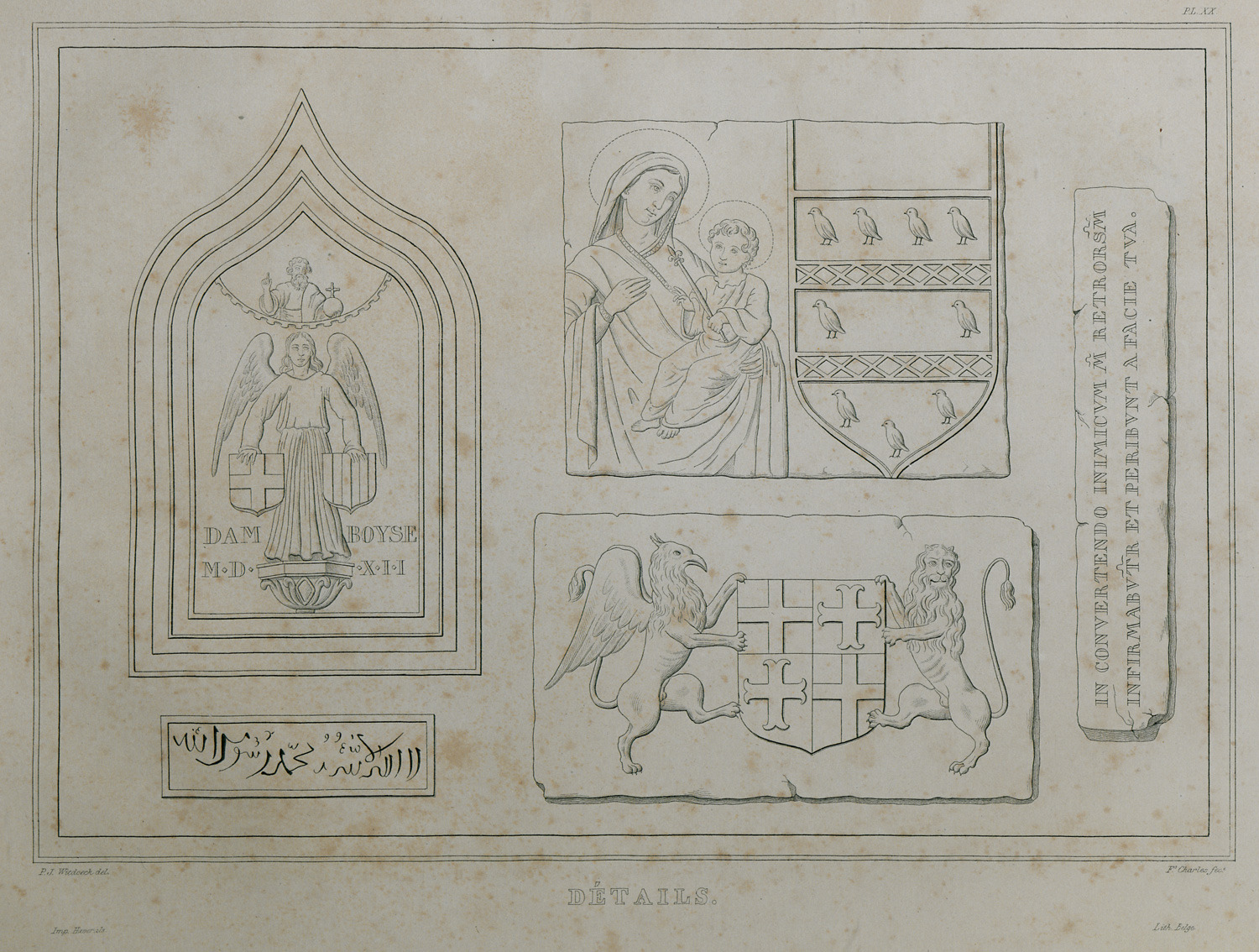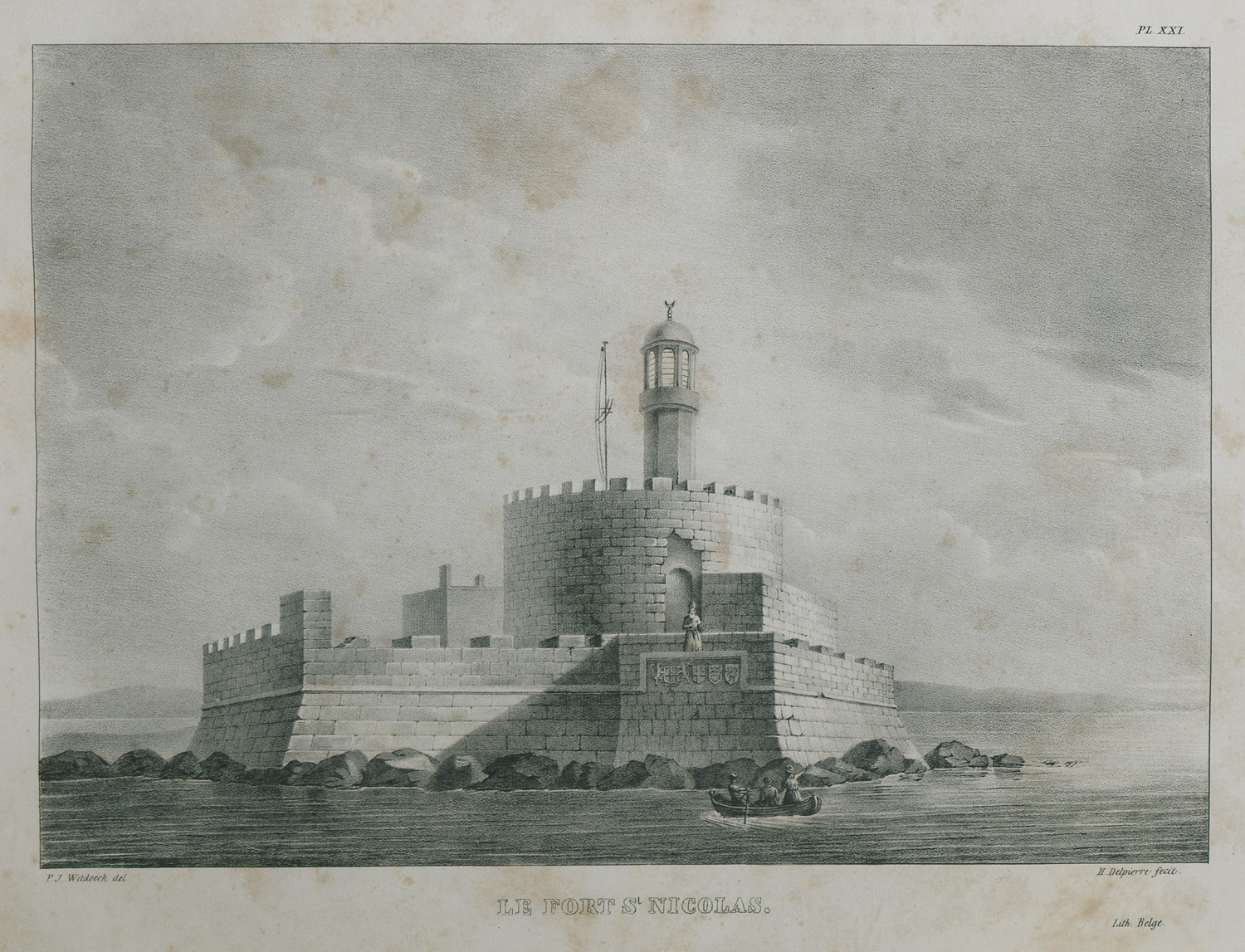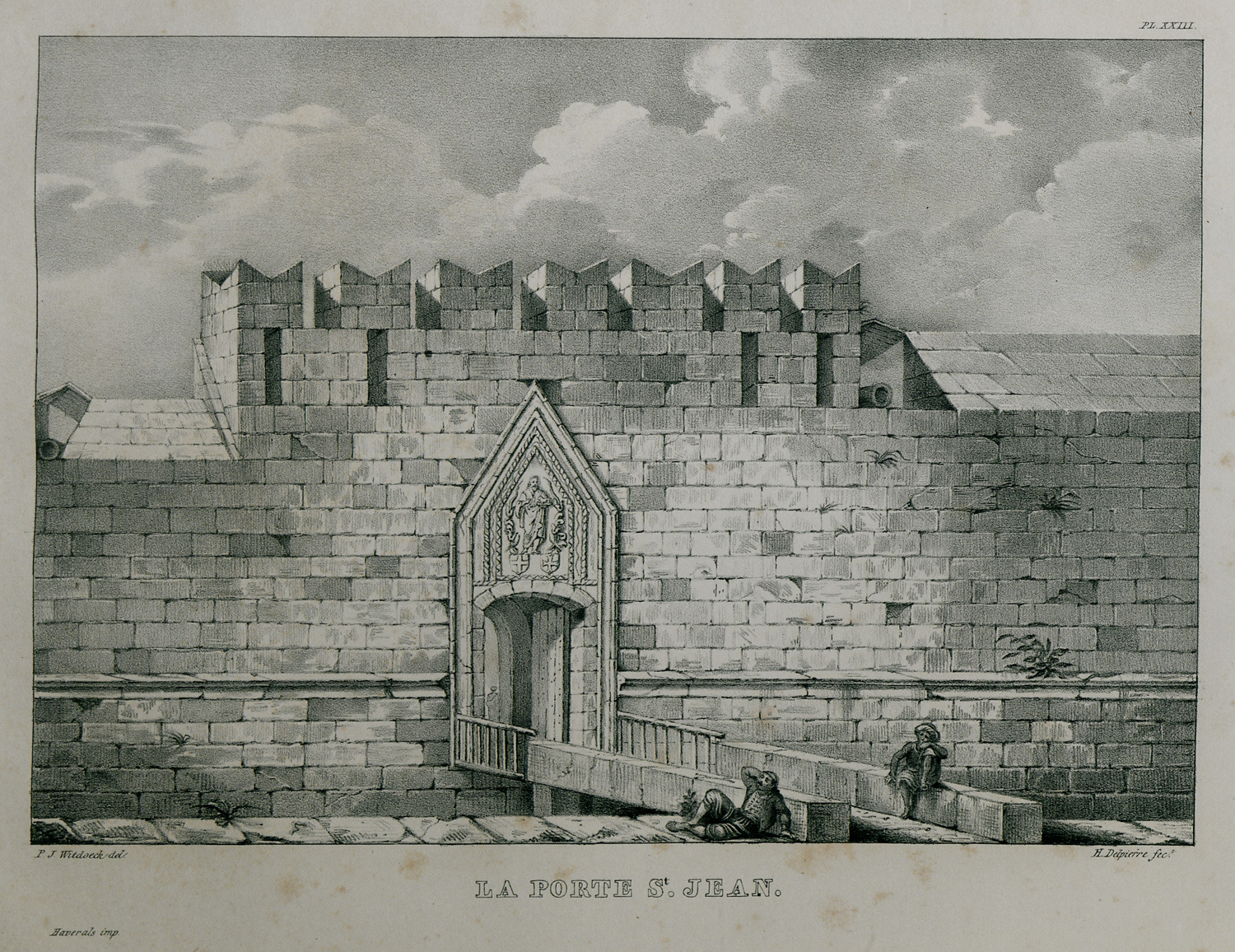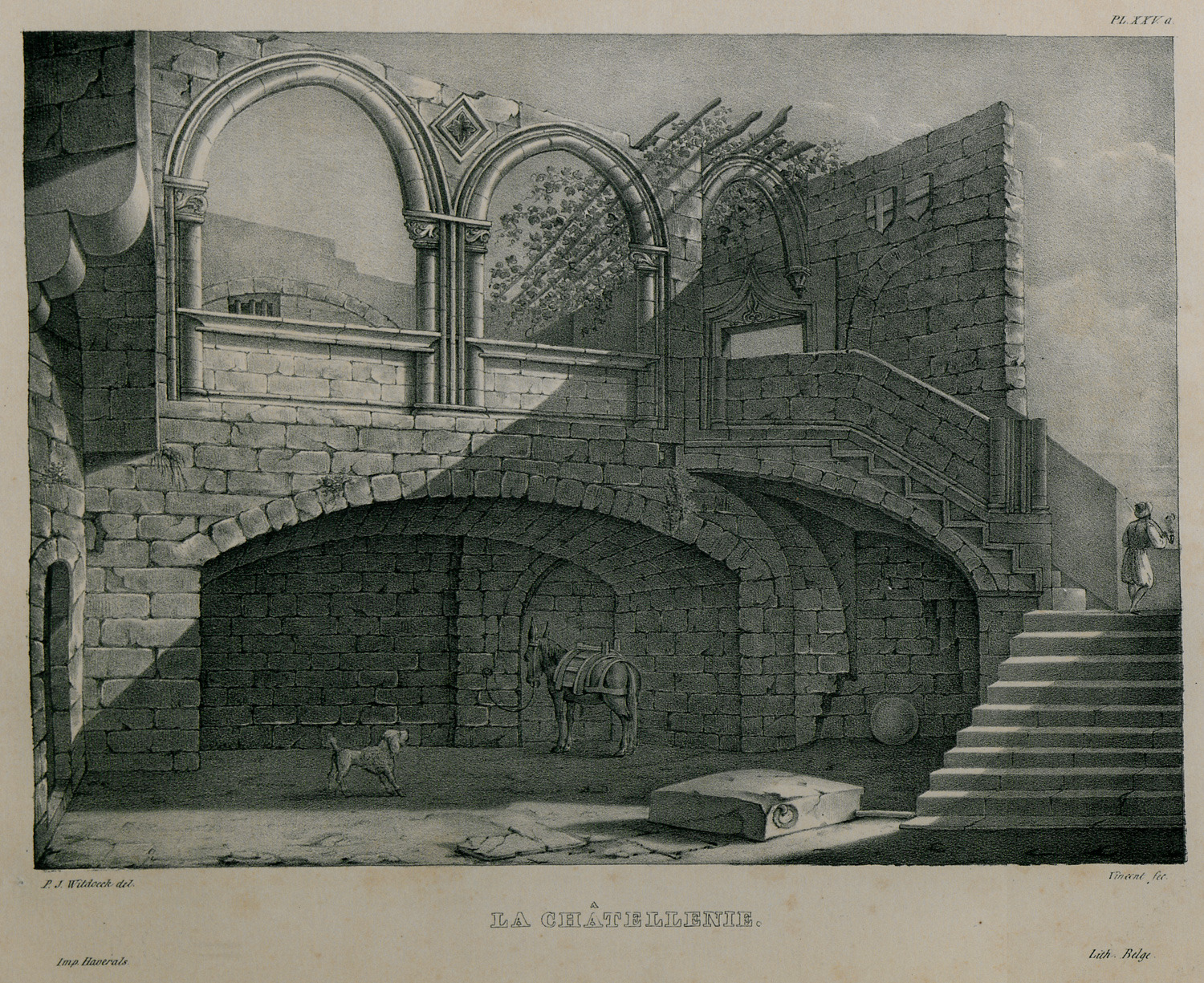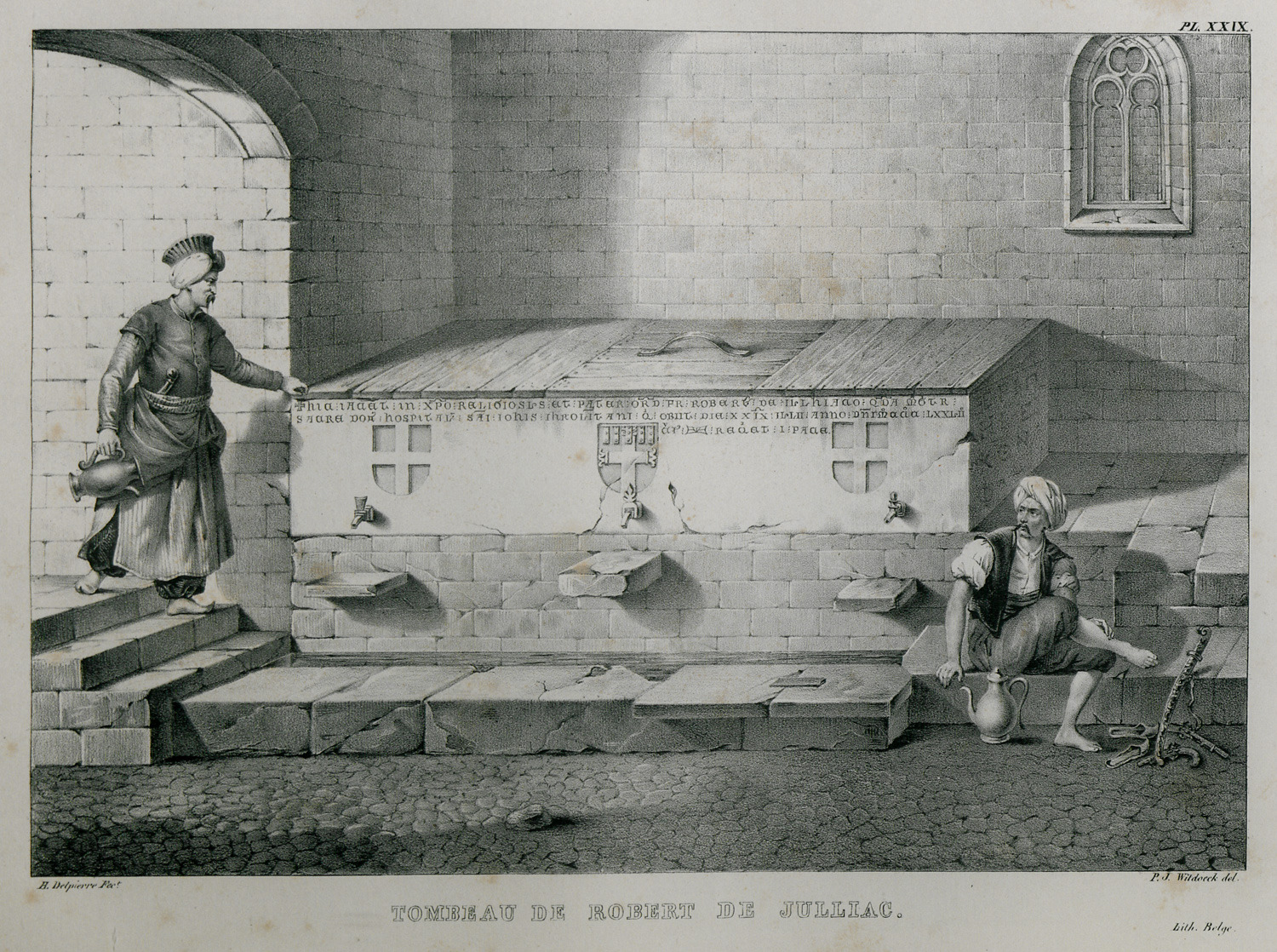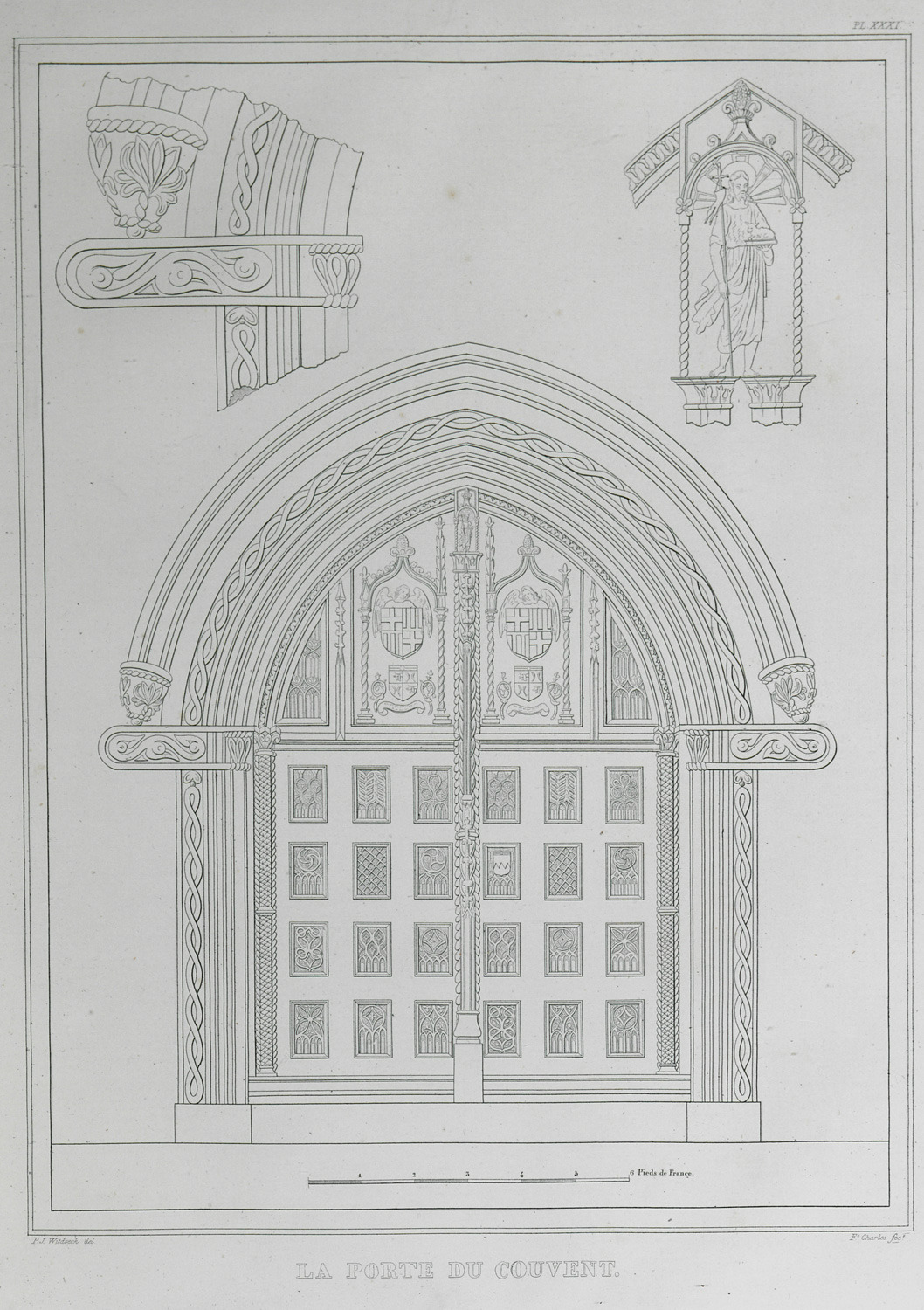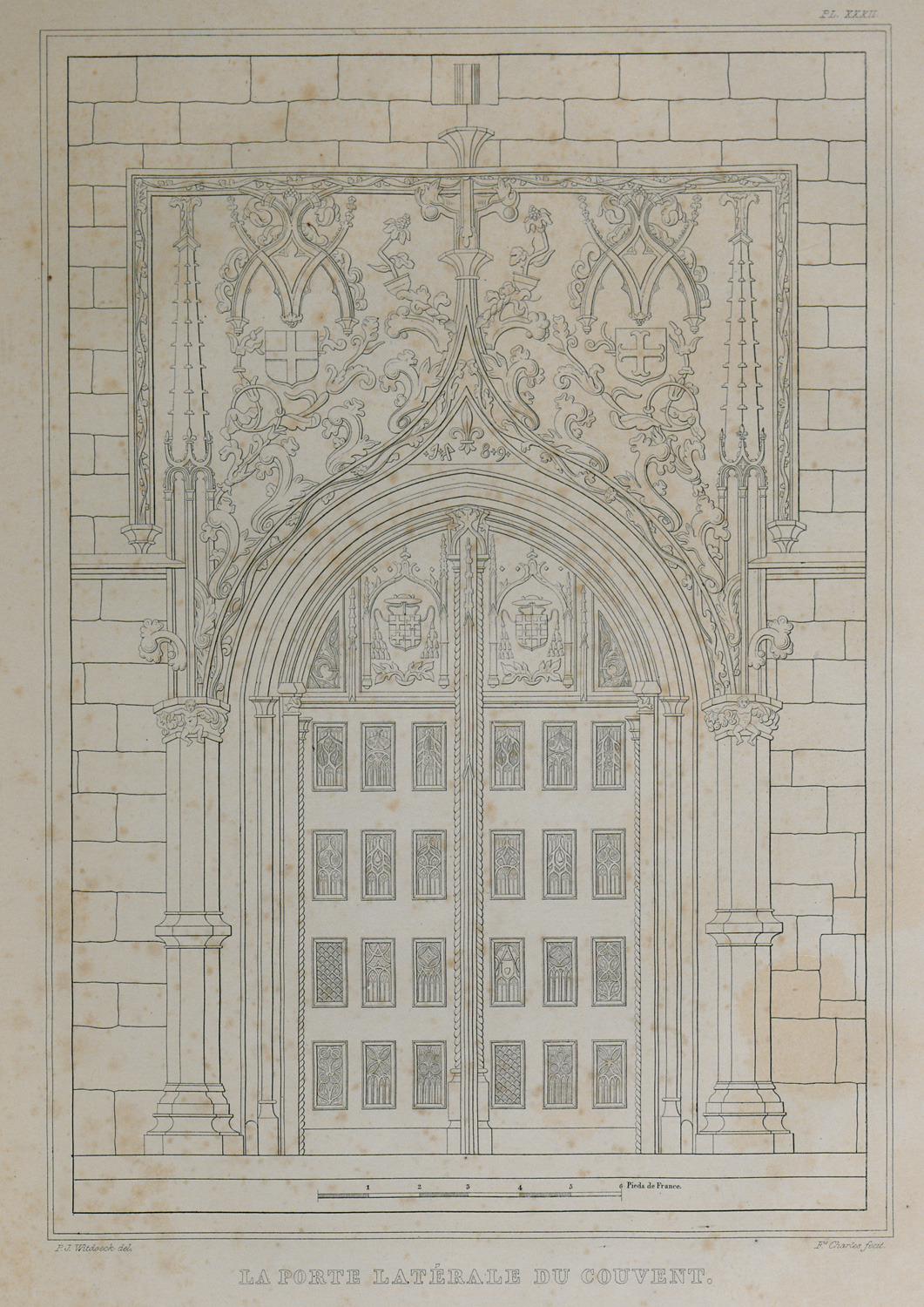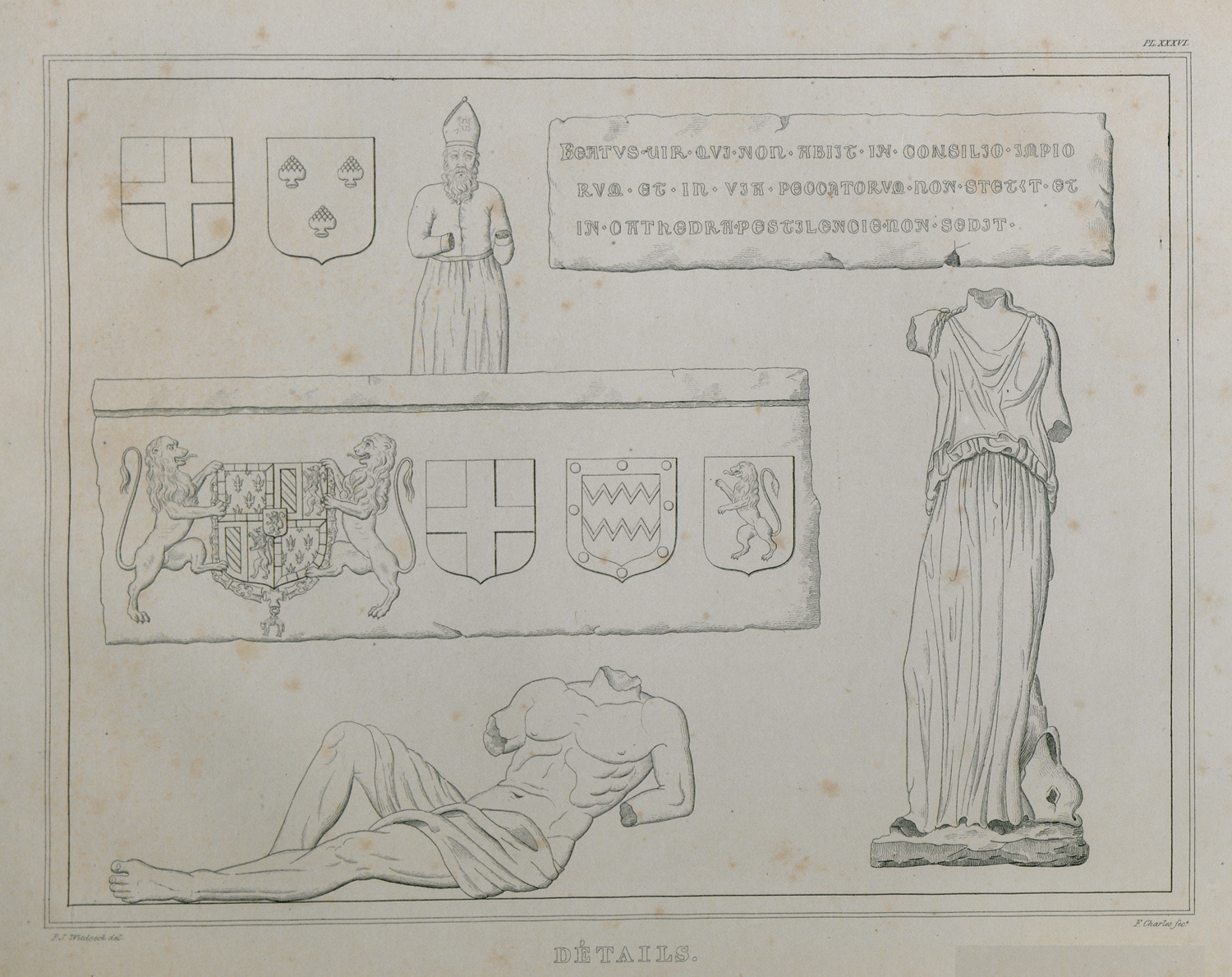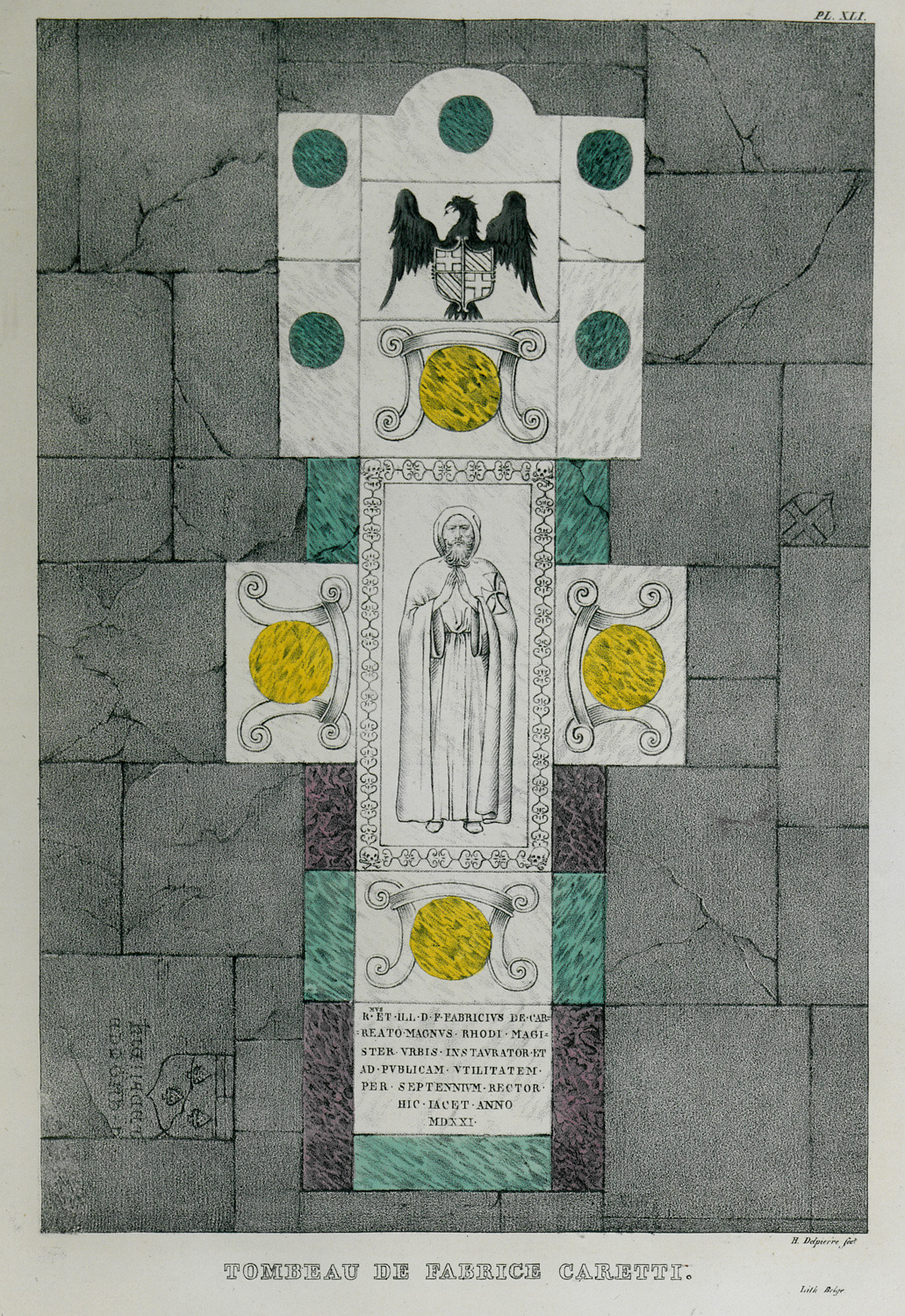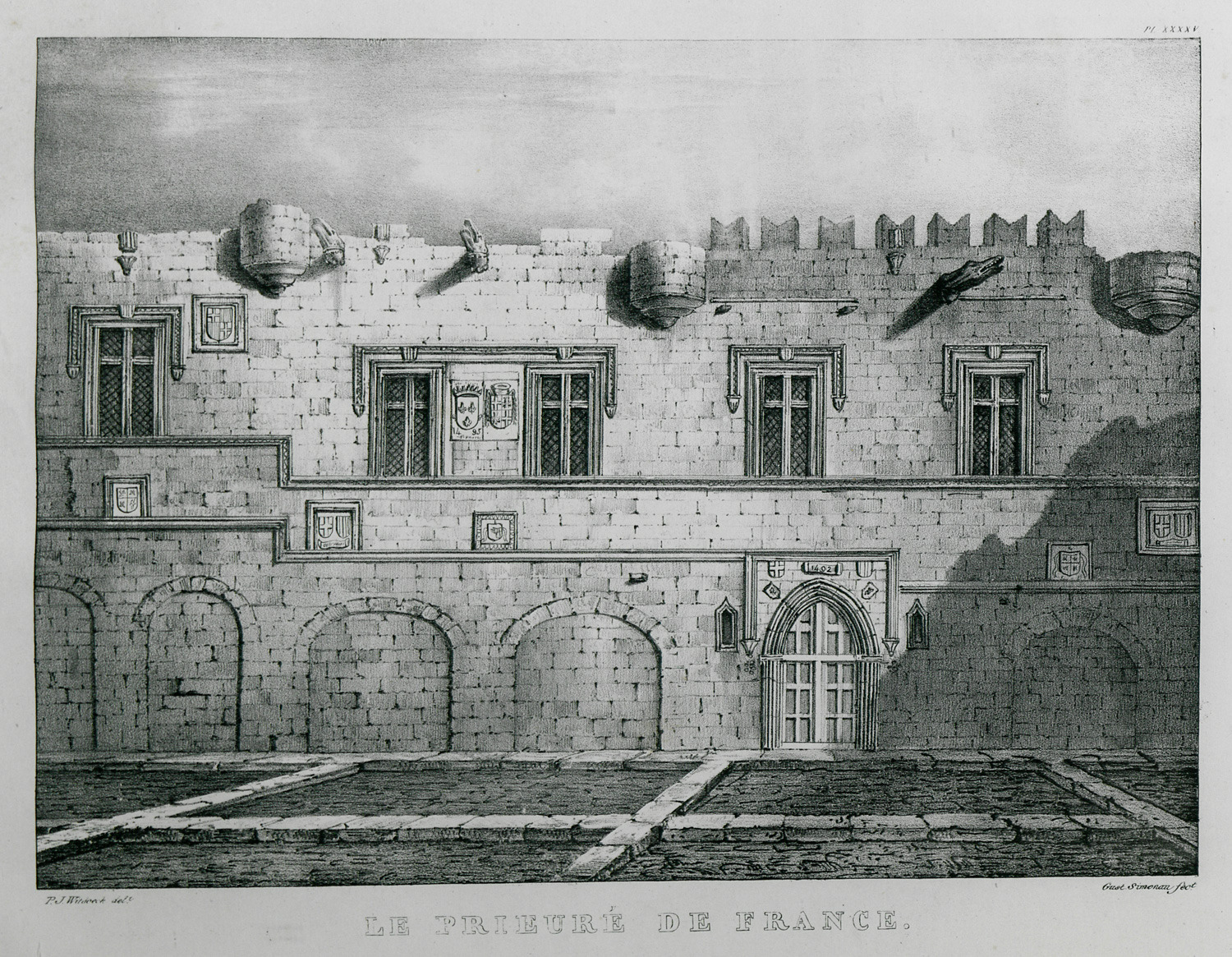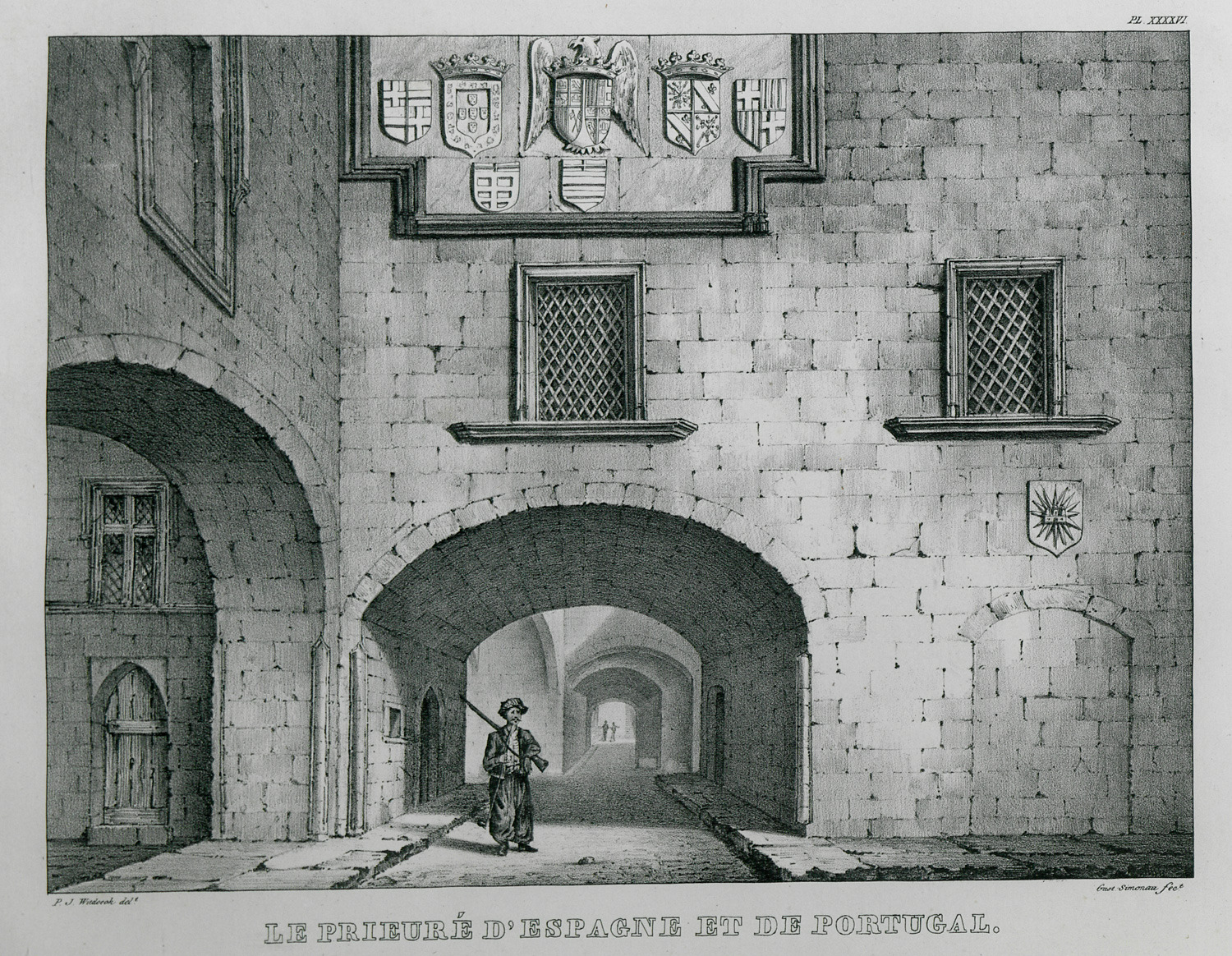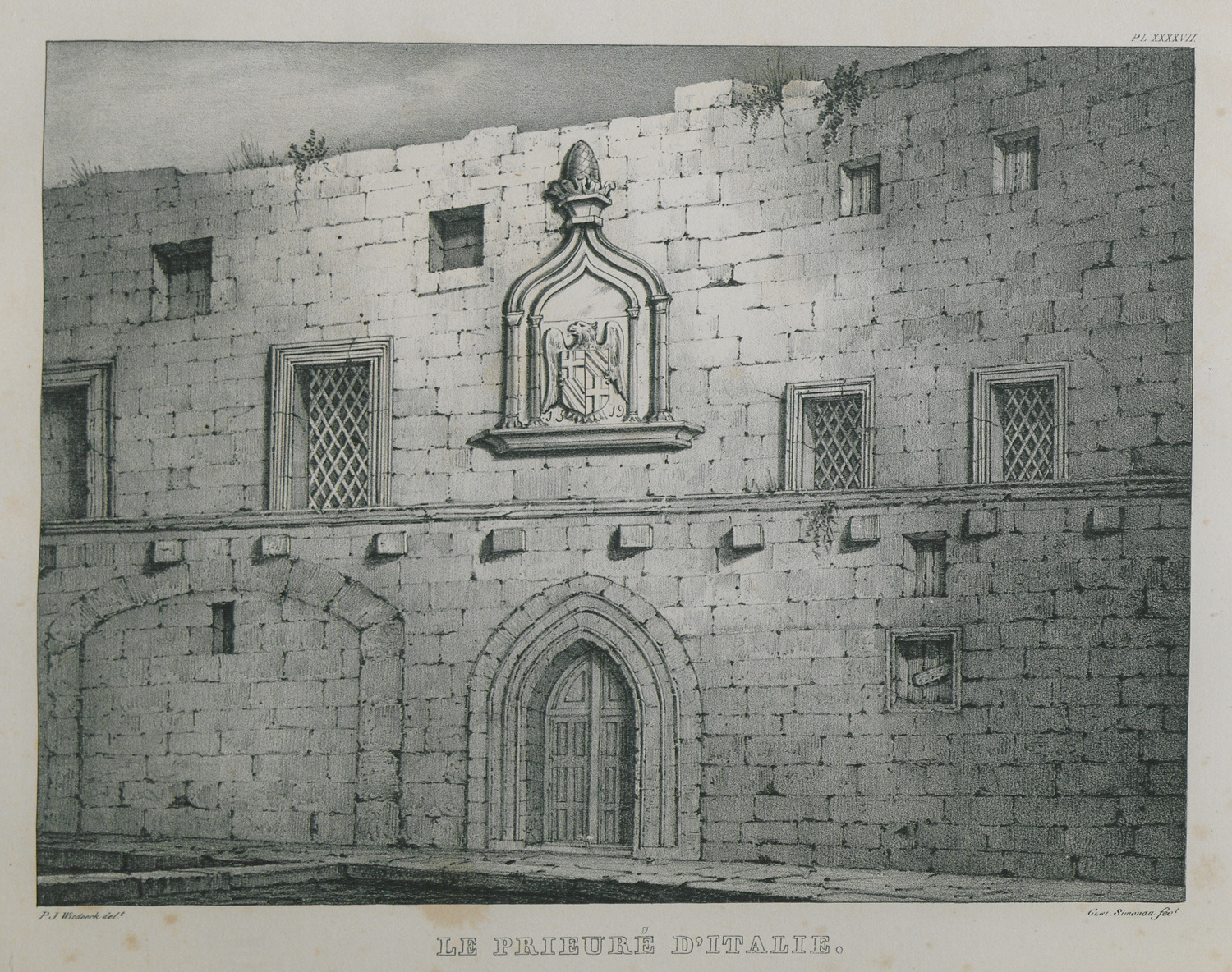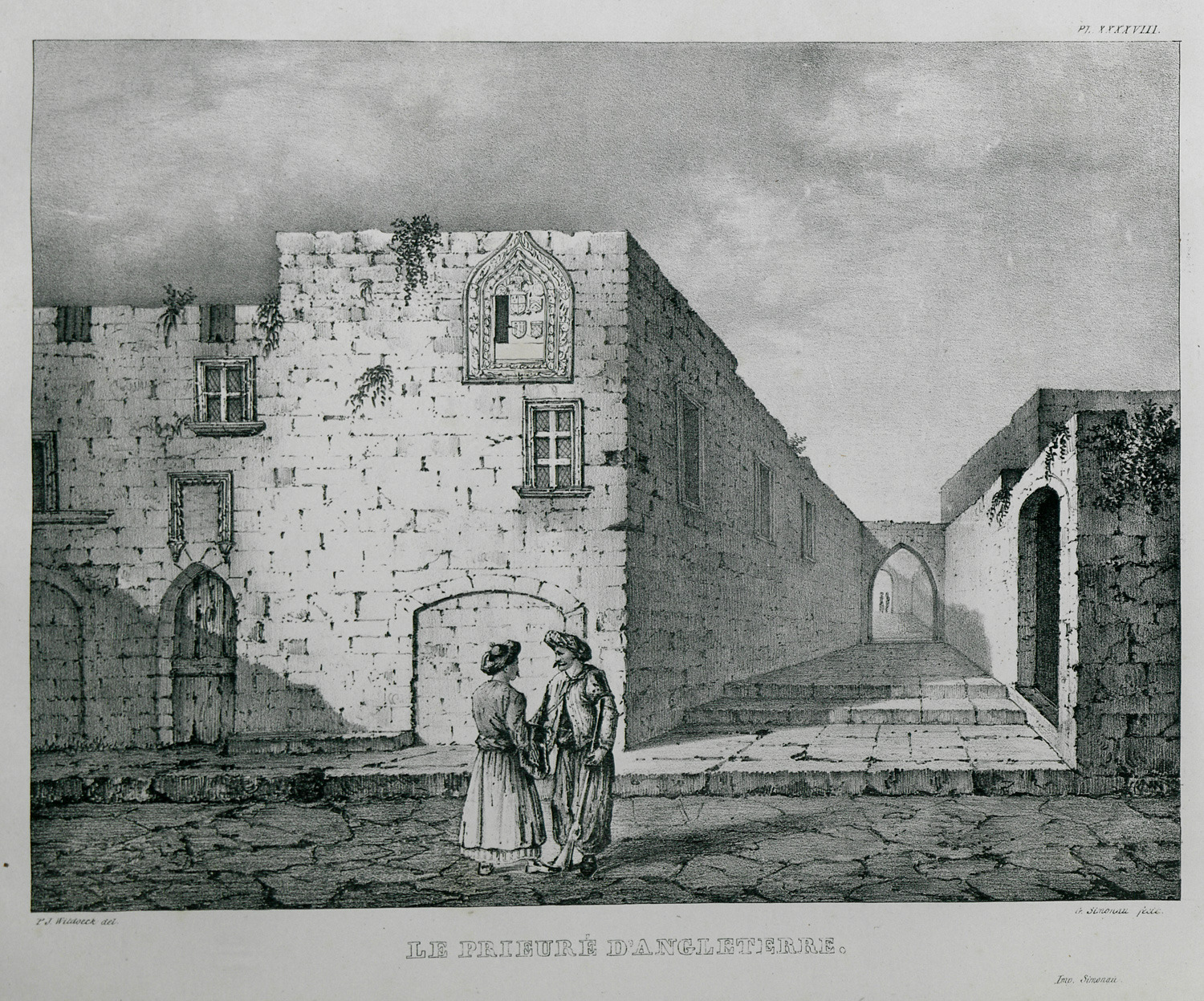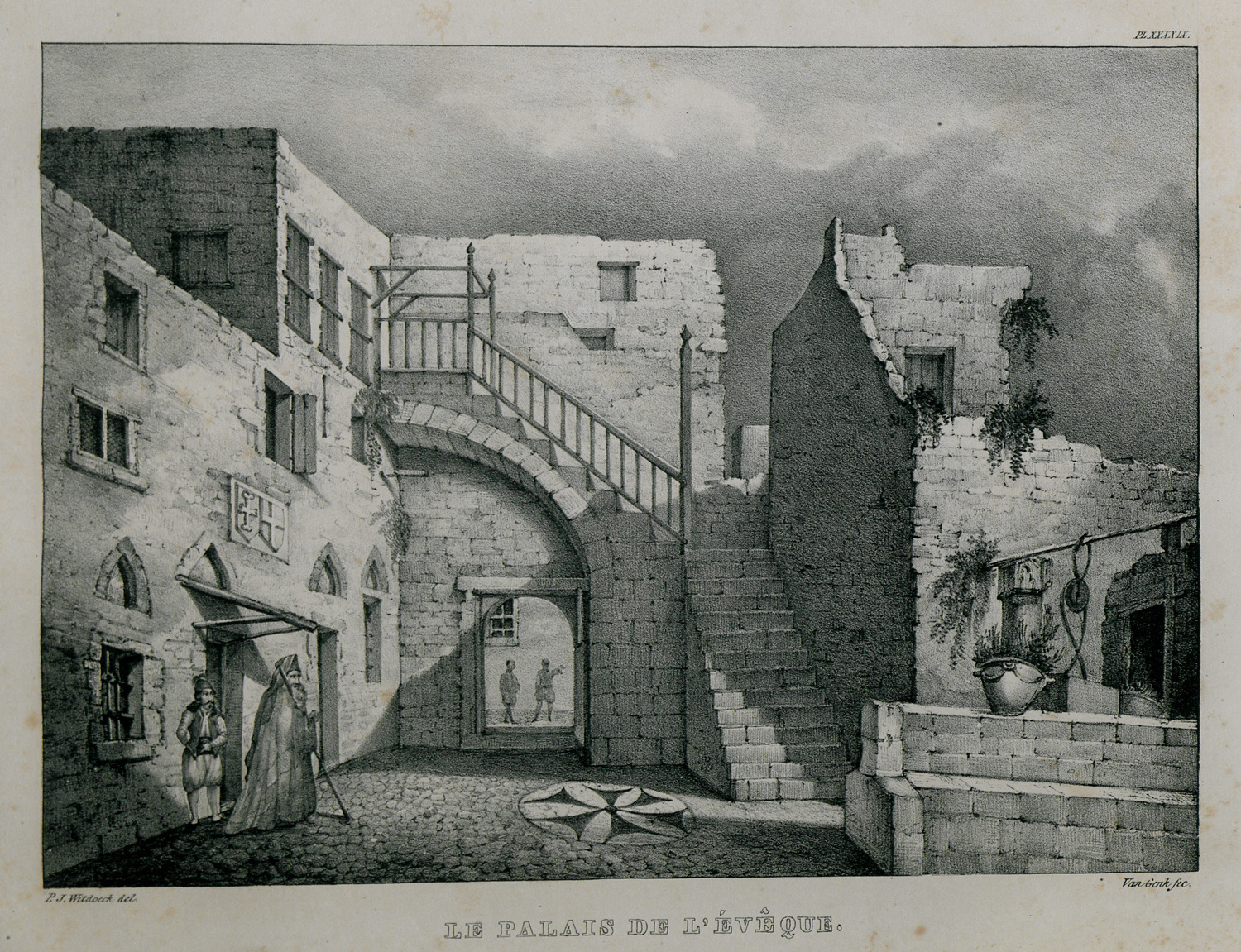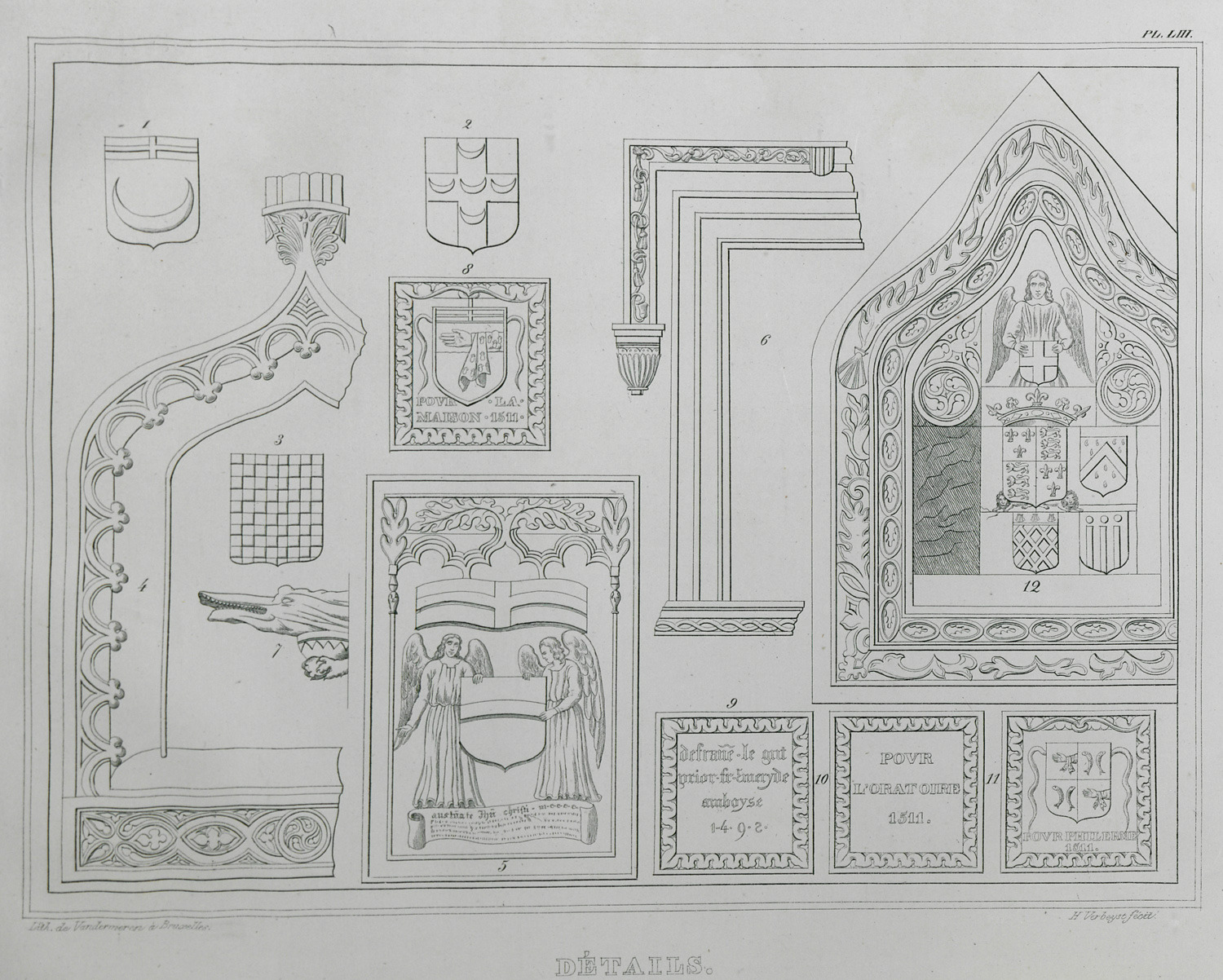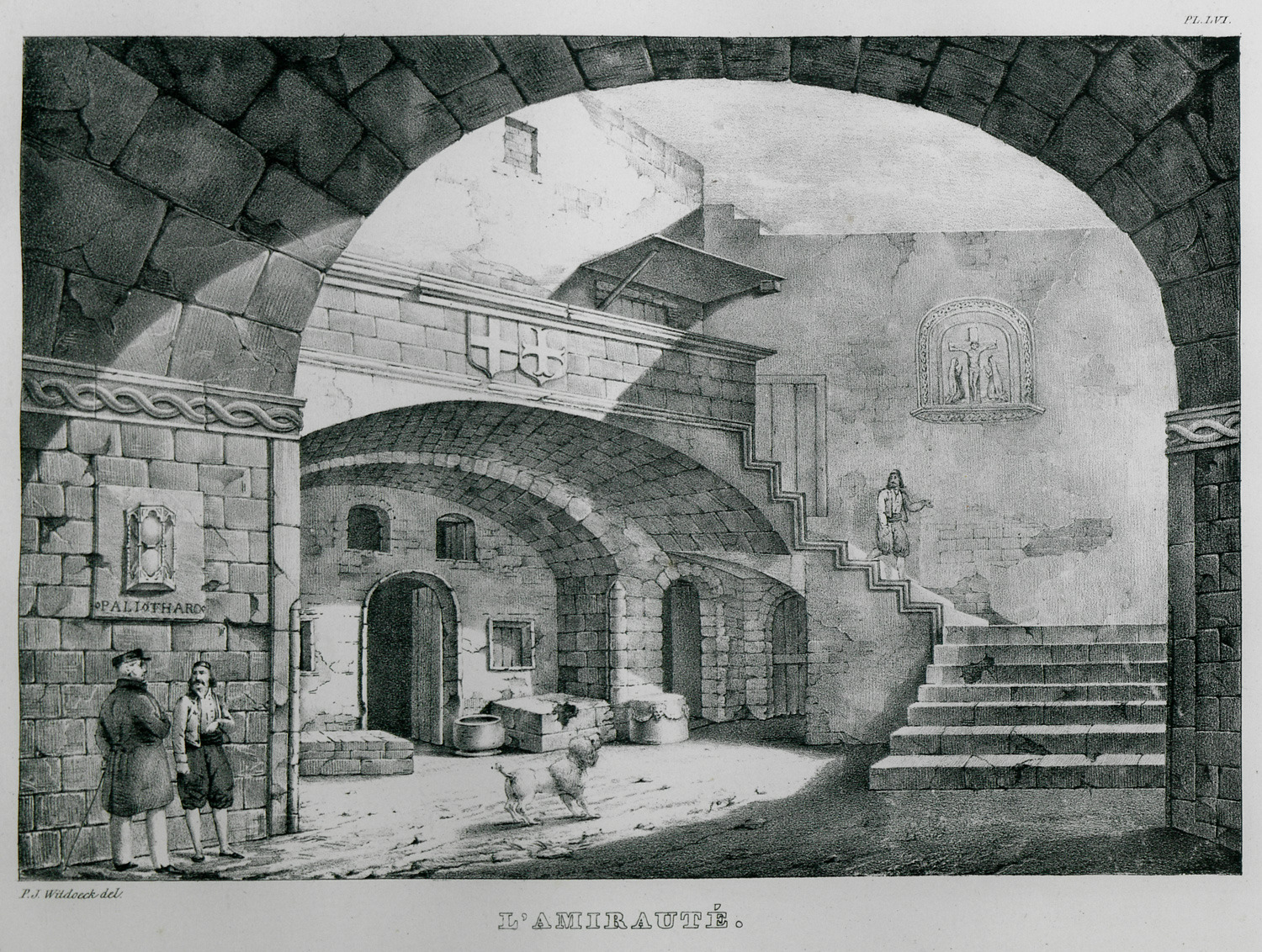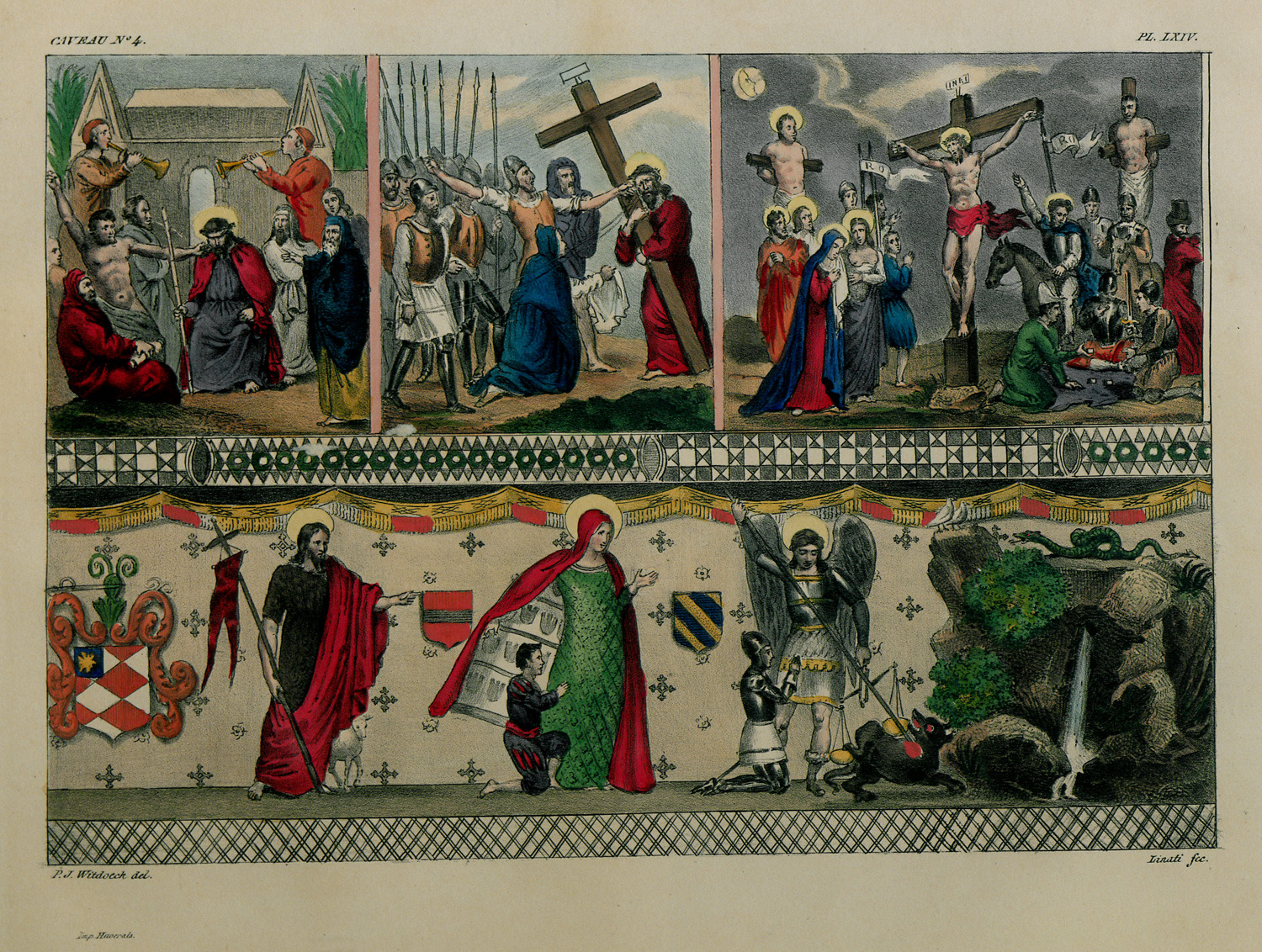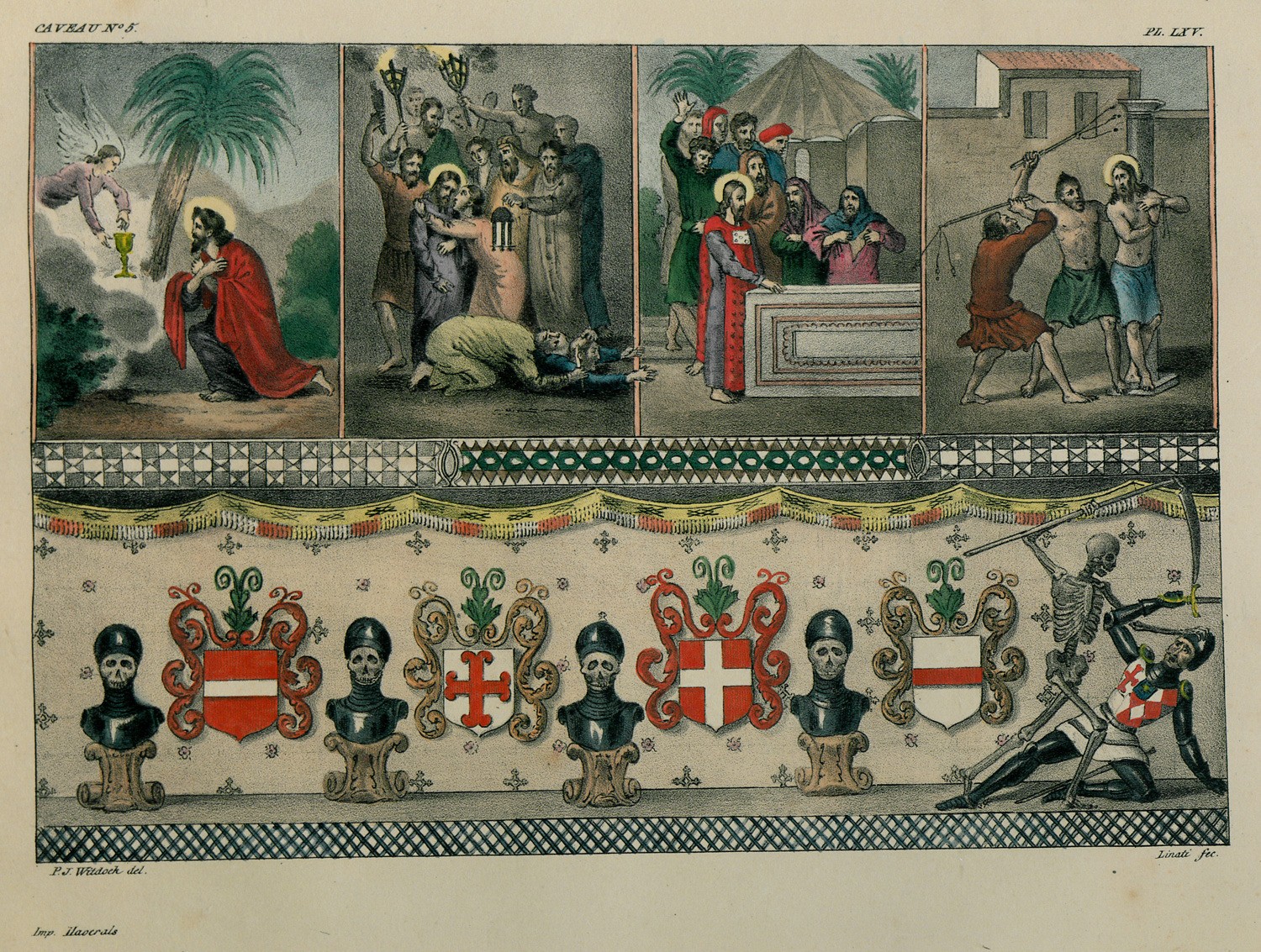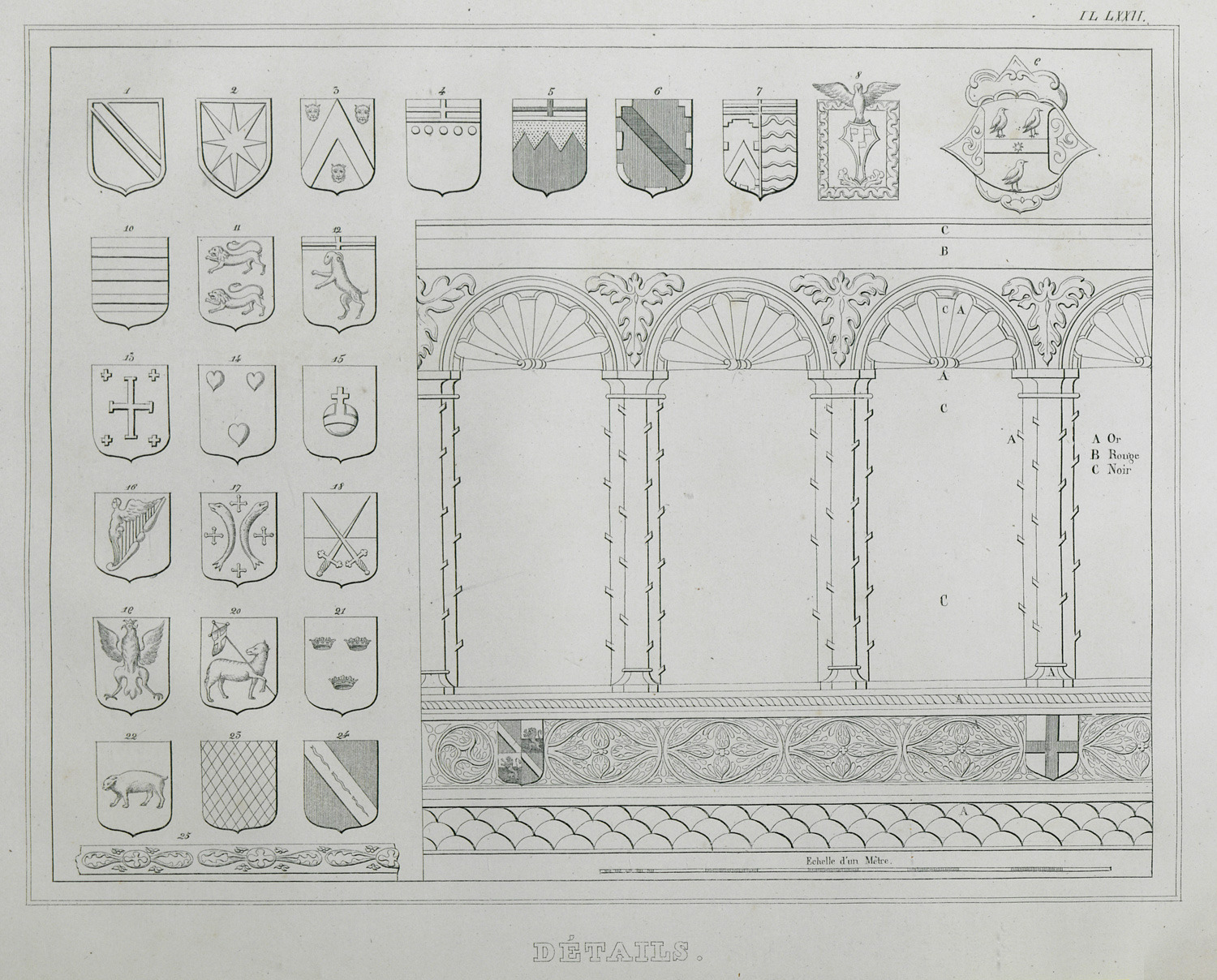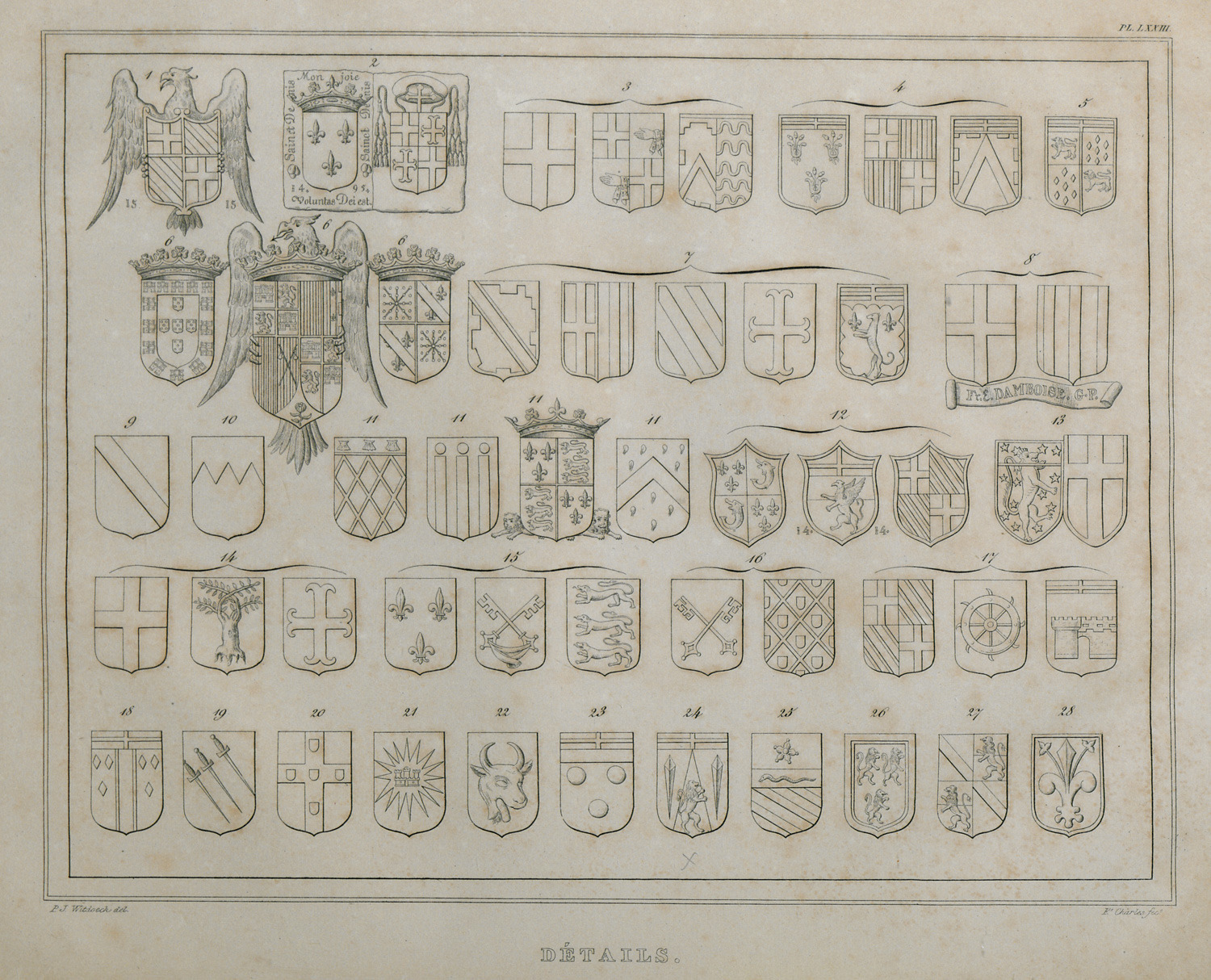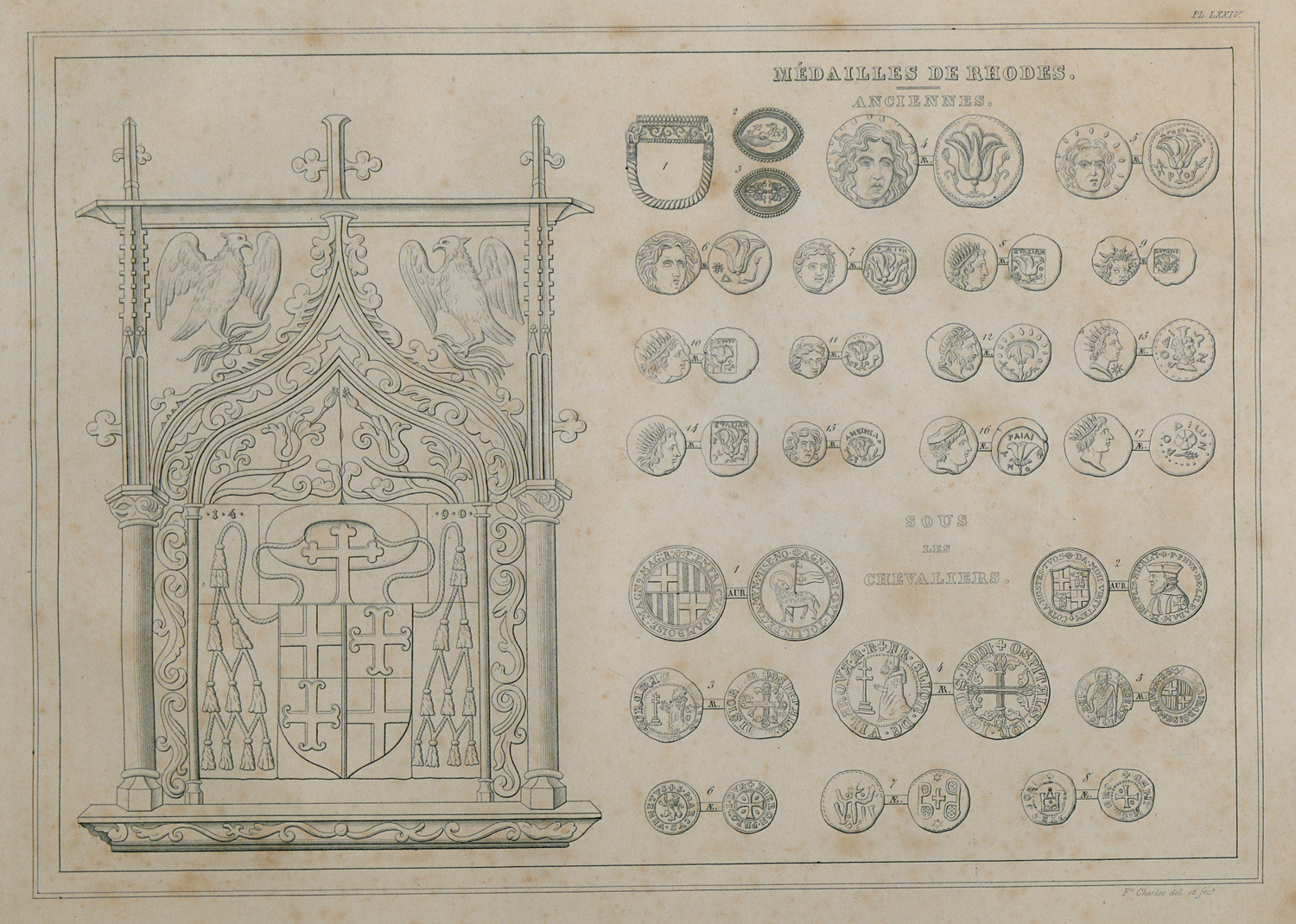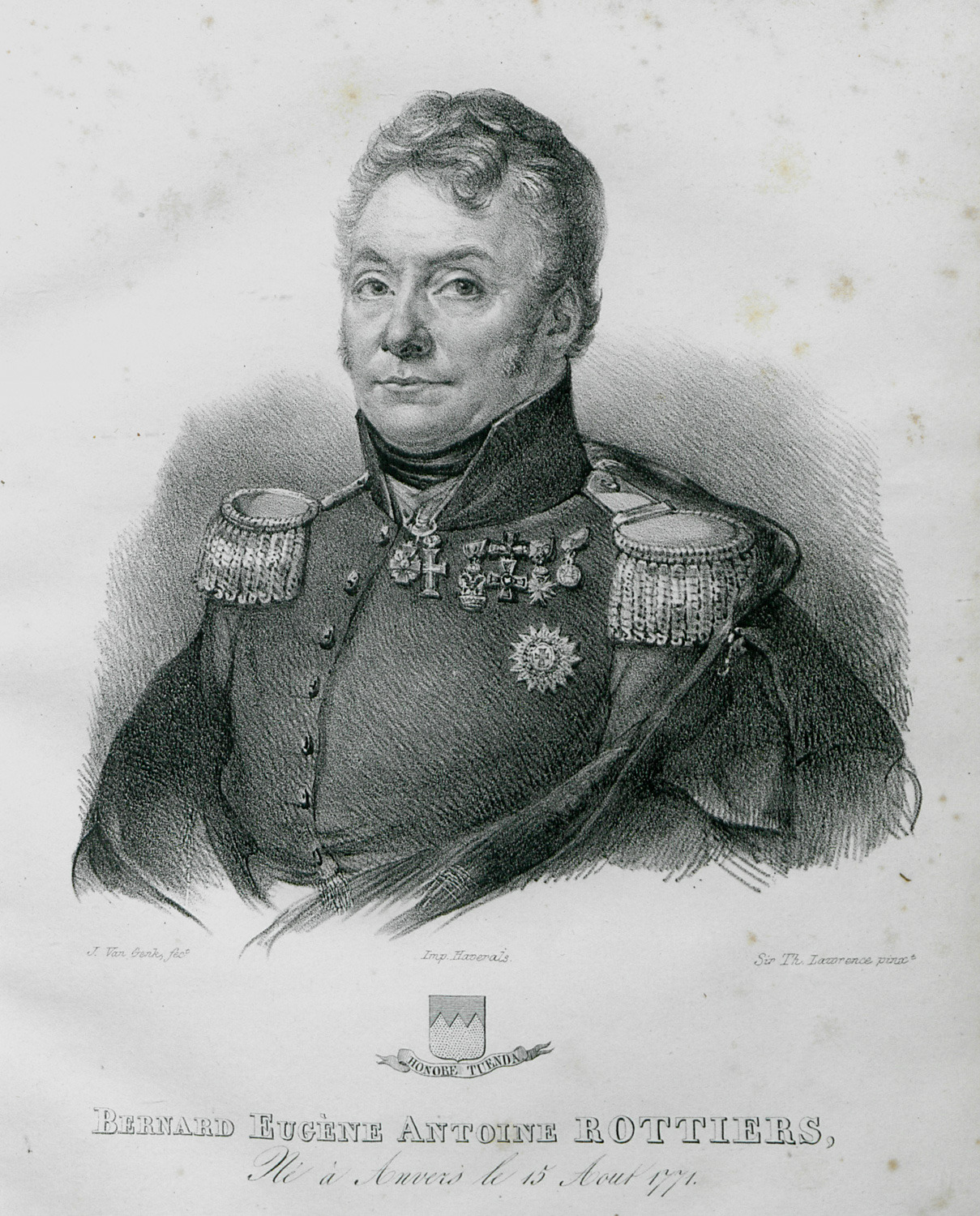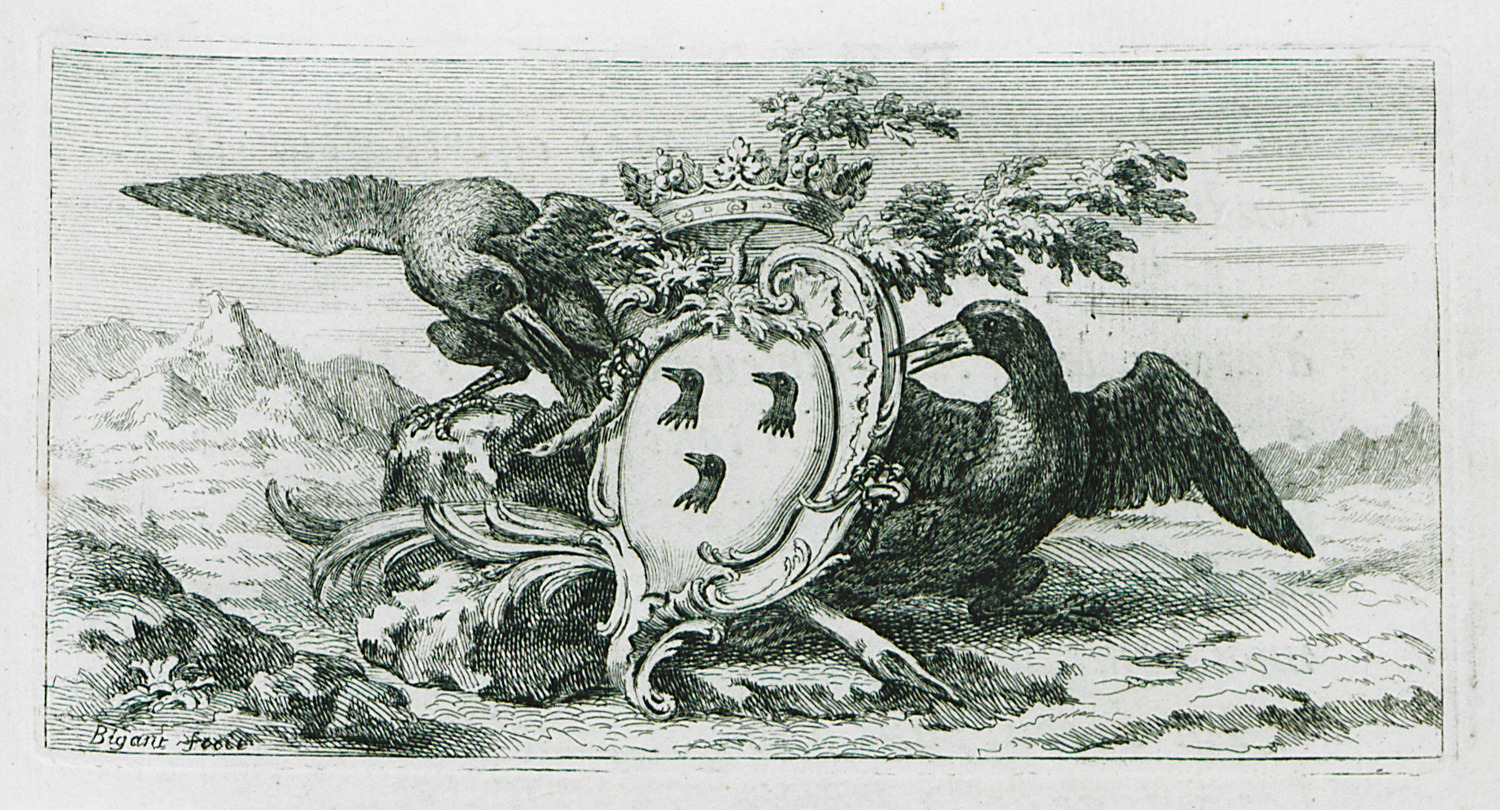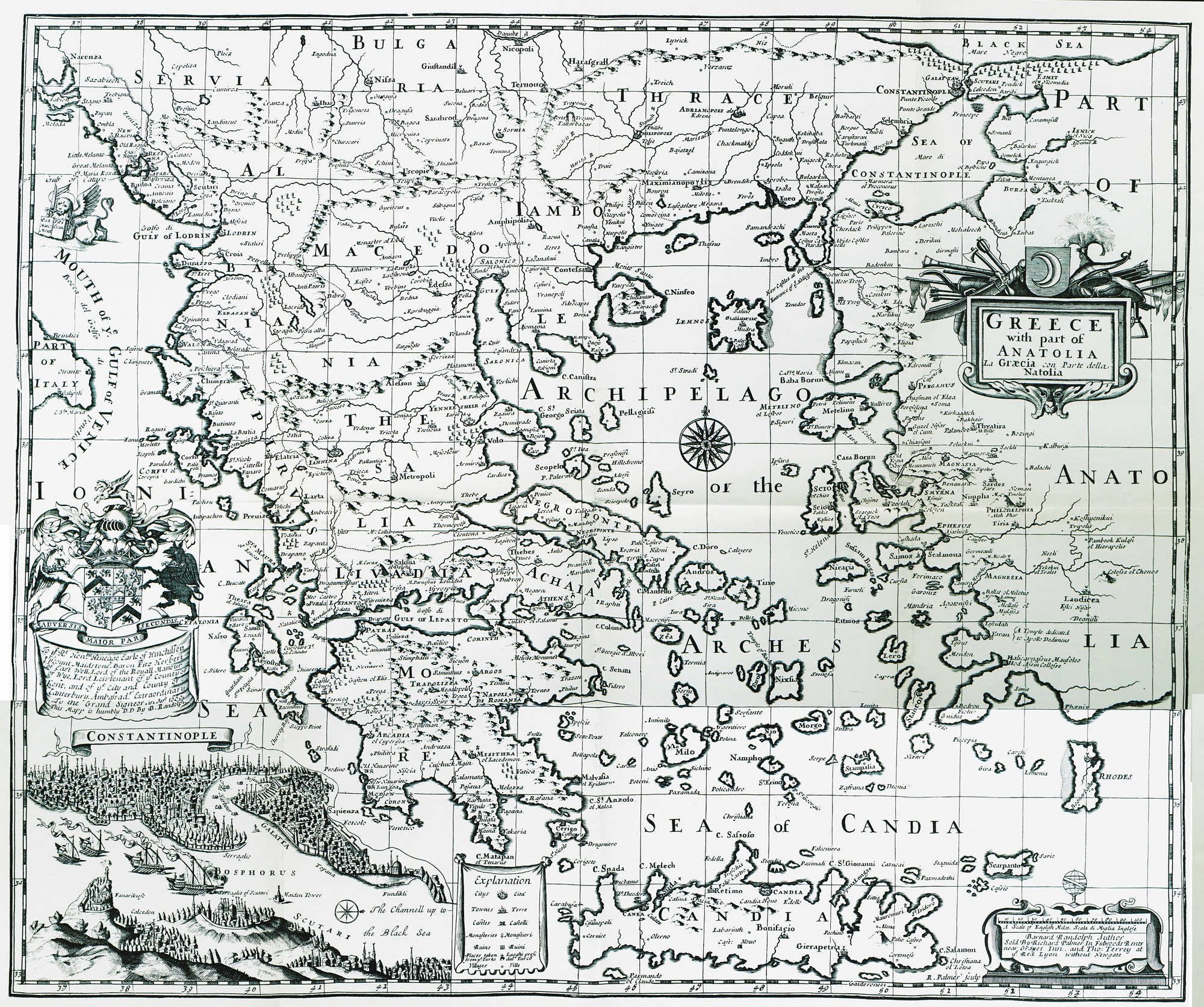Coats of arms – Emblems (141 Subjects)
Coat of arms of Giustiniani family.
Coat of arms on a gate in Antalya.
Frontispiece: The Coat of Arms of the Knights Hospitaller of Malta.
Coat of Arms of the Knights Hospitaller of Rhodes.
View of the Choregic monument of Lysicrates, Athens
Coats of armds and bas-reliefs from the walls of the city of Rhodes. Bas-relief of Saint Peter, Saint Catherine and Saint John the Baptist. Inscription commemorating the construction of the Sea Gate under Grand Master Pierre d'Aubusson.
Relief of angel and coat of arms of Grand Master Émery d'Amboise, from D'Amboise Gate. Ottoman inscription from the same gate (“There is no god but God, Muhammad is the messenger of God."). Relief of Virgin with infant and coat of arms of Grand Master Pierre d'Aubusson, discovered in the Jewish quarter and kept at the Franciscan monastery in Rhodes. Coat of arms of the Knights Hospitaller from the medieval town. Latin inscription «In convertendo inimicum meum retrorsum infirmabuntur et peribunt a facie tua» (Psalms 9:3 “When mine enemies are turned back, they shall fall and perish at thy presence”), referring to the siege of Rhodes by the Ottomans.
Fortress of Saint Nicholas at Mandraki, Rhodes.
Gate of Saint John in Rhodes.
Castellania building, medieval town of Rhodes.
The tomb of Grand Master Robert de Julliac in the Franciscan church which was converted into a mosque, adjacent to the public baths of Rhodes (Yeni Hamam). Muslim people preparing to pray at the mosque.
Entrance to the Knights' Hospital in Rhodes (current Archaeological Museum of Rhodes).
Side entrance to the Knights' Hospital in Rhodes (current Archaeological Museum of Rhodes).
Coats of arms of Philip of Burgundy, who built the fortress of Saint Nicholas, of Grand Master Piero Raimondo Zacosta (Pere Ramon Sacosta) and his engineer, from the fortress of Saint Nicholas. Relief of saint Nicholas from the same fortress. Inscription from the garden of Auvergne: “Blessed is the one who does not walk in step with the wicked or stand in the way that sinners take or sit in the company of mockers” (Psalms 1:1). Ancient statues at the entrance to the garden of Auvergne.
The tomb of Grand Master Fabrice Caretti in the Church of Saint John in Rhodes.
The Auberge of the Langue of France in the medieval town of Rhodes.
The Auberge of the Langue of Spain and Portugal in the medieval town of Rhodes.
The Auberge of the Langue of Italy in the medieval town of Rhodes.
The Auberge of the Langue of England in the medieval town of Rhodes.
The residence of the Orthodox bishop in Rhodes.
From Agios Stefanos or Monte Smith hill: Coats of arms of Grand Masters Pierre d'Aubusson and Émery d'Amboise, decorative features from several buildings, inscriptions and a gargoyle.
The building called Admiralty or Nauarcheion in the medieval town of Rhodes. The author being shown the location.
Frescoes from the Church of Agios Georgios Chostos in Filerimos, Rhodes. The Passion of Christ.
Saint John the Baptist with the Lamb. Pilgrim with his patron saint. Saint Michael kills the demon as the latter is trying to tip over the scales with the good and bad actions of a young knight who is kneeling before Saint Michael. A fountain with a snake and two pigeons, probably an allegory of “Behold, I send you forth as sheep in the midst of wolves: be ye therefore wise as serpents, and harmless as doves.” (Matthew 10:16).
Frescoes from the Church of Agios Georgios Chostos in Filerimos, Rhodes. The Passion of Christ. Sculls in armour and coats of arms of the Knights Hospitaller. Death prevails over a knight.
Coats of arms from the medieval town of Rhodes. The band which separates the upper from the lower frescoes in the church of Hagios Georgios Chostos in Filerimos, Rhodes. Niches from the church of Saint John in the medieval town of Rhodes, which housed the statues of the Apostles, according to the author.
Coats of arms from the medieval town of Rhodes.
Relief from the medieval town of Rhodes. Ancient coins from Rhodes. Coins of the Knights Hospitaller era.
Portrait of Bernard Eugène Antoine Rottiers.
Frontispiece: Author's dedication to Louis de Machault d'Arnouville, archbishop of Amiens.
Map of Greece with the western shores of Asia Minor. On the lower part a map of Istanbul is provided as well.


